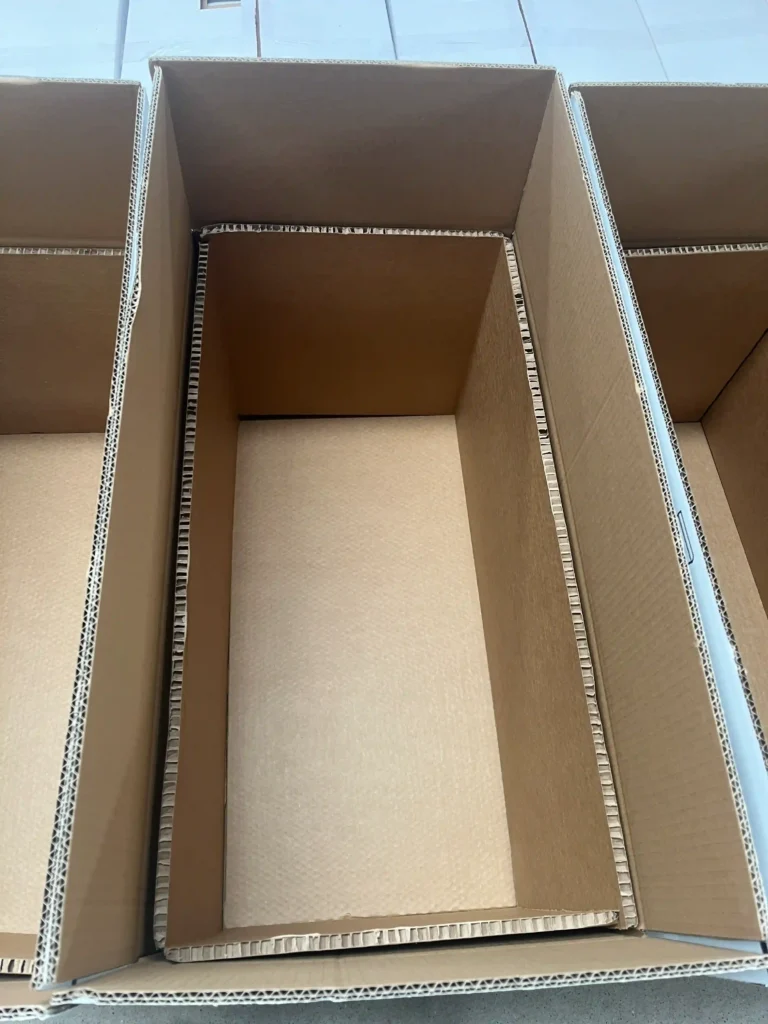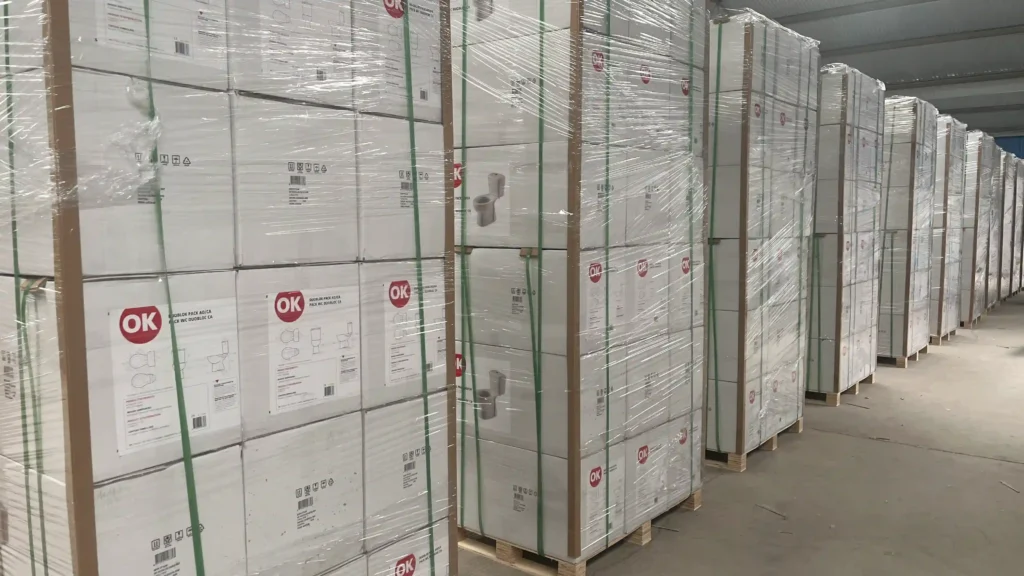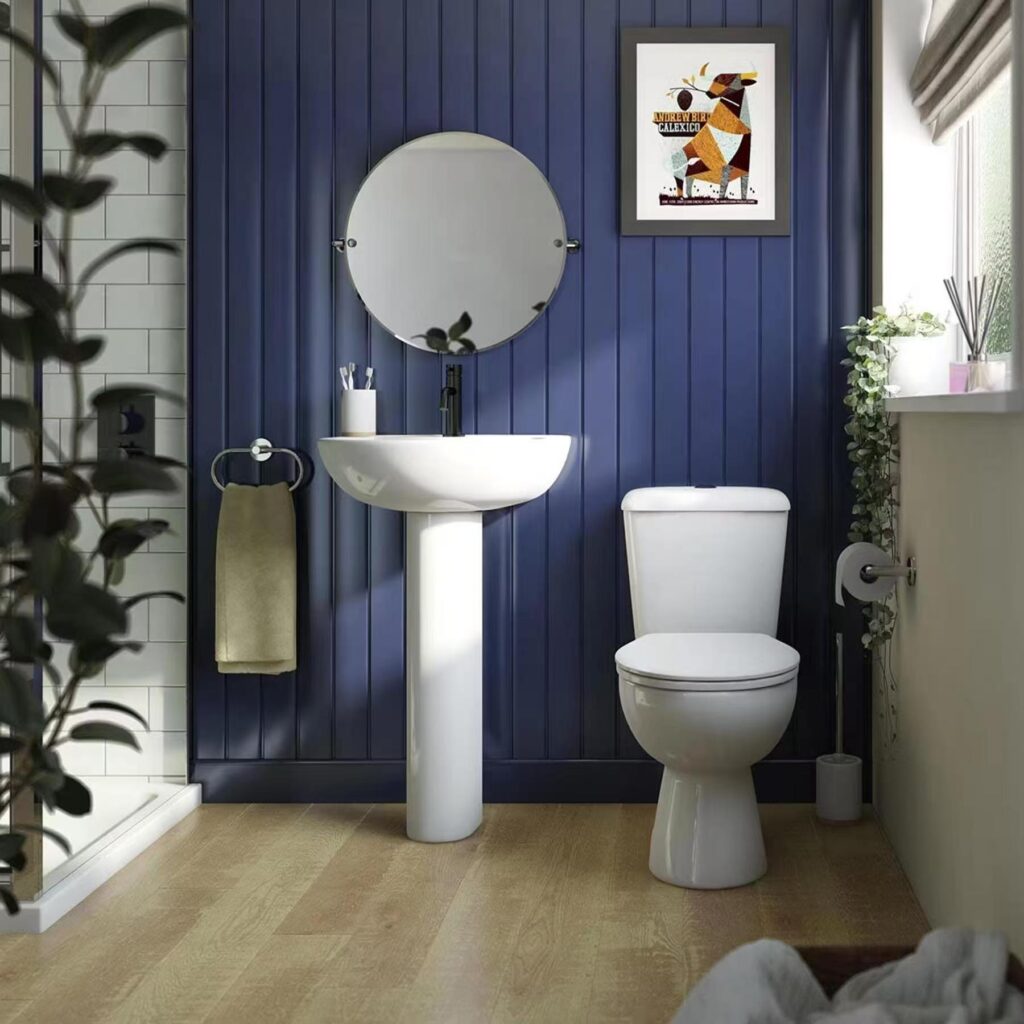Introduction
Broken ceramic toilets aren’t just a financial headache—they’re a logistics nightmare that can derail your entire import operation. For importers dealing with global shipping, the risk of damage during transit isn’t just a possibility; it’s a persistent threat that can lead to costly claims, delayed shipments, and dissatisfied customers.
But here’s a game-changing insight: strategic packaging solutions can reduce ceramic toilet breakage by up to 80%. At MFBath, we’ve seen firsthand how innovative approaches like corner foam protection and secure pallet ties can transform the shipping process. This guide dives deep into cutting-edge ceramic toilet packaging techniques that not only safeguard your products but also optimize your supply chain efficiency.
Whether you’re battling high claim rates or simply looking to streamline your import process, understanding these protective packaging methods is crucial. We’ll explore everything from high-density foam inserts to eco-friendly cushioning materials, giving you the knowledge to make informed decisions that protect your bottom line and your products during global transit.
Why Proper Packaging is Critical for Ceramic Toilets
When it comes to shipping ceramic toilets globally, proper packaging isn’t just important – it’s “make or break”. As a fragile product, ceramic toilets require special care to ensure they arrive at their destination intact. Let’s dive into why robust packaging is crucial for protecting these delicate bathroom fixtures during transit.
The Fragility of Ceramic Toilets: Risks in Global Transit
Ceramic toilets are notoriously delicate. Their size, weight, and brittle nature make them particularly vulnerable to damage during shipping. From rough handling at ports to the constant vibrations of long-haul transportation, the journey from manufacturer to customer is fraught with potential hazards.
“Proper ceramic toilet packaging can reduce breakage rates by up to 80%, significantly improving delivery success and customer satisfaction.”
Without adequate protection, even minor impacts can lead to chips, cracks, or complete breakage. This vulnerability underscores the critical need for ceramic toilet packaging that can withstand the rigors of global shipping.
Financial Impact of Breakage: Claims, Delays, and Customer Dissatisfaction
The consequences of inadequate packaging extend far beyond the immediate loss of the product. When a ceramic toilet arrives damaged, it sets off a chain reaction of issues:
- Financial losses due to product replacement
- Shipping claim processes that tie up resources
- Delays in project completion for contractors
- Customer dissatisfaction and potential loss of future business
These factors can significantly impact a company’s bottom line and reputation. By investing in proper protective packaging for toilets, businesses can avoid these costly setbacks.
How Packaging Reduces Claim Rates by Up to 80%
Effective ceramic toilet packaging solutions can dramatically reduce breakage rates. At MFBath, we’ve seen claim rates drop by as much as 80% when proper packaging techniques are employed. This significant reduction translates to:
- Fewer replacement costs
- Reduced administrative burden from processing claims
- Improved customer satisfaction and loyalty
- Enhanced reputation as a reliable supplier
By prioritizing robust packaging, companies can ensure cost savings and maintain a competitive edge in the market.
Industry Standards for Ceramic Toilet Shipping
The sanitary ware industry has developed specific standards for ceramic toilet shipping solutions. These guidelines ensure that packaging meets the rigorous demands of global transportation. Key elements include:
| Packaging Component | Description | Purpose | Industry Standard | Impact on Breakage Rate |
|---|---|---|---|---|
| Foam Inserts | Custom-molded foam pieces | Cushioning against impacts | Minimum 2″ thickness | Reduces breakage by 40% |
| Corrugated Boxes | Heavy-duty cardboard containers | Structural protection | Double-wall construction | Reduces breakage by 25% |
| Plastic Wrapping | Waterproof barrier | Moisture protection | 4 mil thickness | Reduces moisture damage by 90% |
| Shock Indicators | Visual impact monitors | Detect mishandling | 25G threshold | Improves handling care by 30% |
| Pallet Securing | Strapping and stretch wrap | Stabilize load | Minimum 2 straps per side | Reduces transit damage by 50% |
By adhering to these standards, manufacturers and shippers can significantly reduce the risk of damage during transportation.
In conclusion, proper packaging is not just an option but a necessity when it comes to ceramic toilet shipping. It’s an investment that pays dividends in reduced claims, improved customer satisfaction, and a stronger bottom line. At MFBath, we understand the importance of getting your products to their destination safely, which is why we prioritize robust, industry-standard packaging for all our ceramic sanitary ware.

Advanced Packaging Materials for Maximum Protection
When it comes to ceramic toilet packaging, using the right materials can make all the difference in ensuring your products arrive safely at their destination. At MFBath, we’ve “cracked the code” on effective packaging solutions for toilets during transit. Let’s explore the advanced materials that provide maximum protection for these delicate fixtures.
Corner Foam Protection: Absorbing Shocks and Reducing Damage
One of the most vulnerable areas of a ceramic toilet during shipping is its corners. That’s where corner foam protection comes into play. These specially designed foam pieces act as shock absorbers, significantly reducing the risk of chips and cracks.
“Advanced corner foam protection can reduce corner damage in ceramic toilets by up to 95% during global shipping, ensuring products arrive in pristine condition.”
The foam’s ability to compress and bounce back helps dissipate energy from impacts, providing a crucial first line of defense against the rigors of transportation.
High-Density Foam Inserts: Tailored Cushioning for Toilets
High-density foam inserts are a game-changer in secure toilet packaging methods. These custom-molded pieces cradle the toilet, providing a snug fit that minimizes movement during transit. The high-density nature of the foam offers superior protection against both impacts and vibrations.
At MFBath, we use precision-cut foam inserts that match the exact contours of our ceramic toilets. This tailored approach ensures maximum protection for every curve and edge of the product.
Corrugated Cardboard: Multi-Layered Defense Against Pressure
While foam provides cushioning, corrugated cardboard offers structural integrity to the overall package. Multi-layered cardboard boxes create a robust outer shell that resists crushing and punctures.
The effectiveness of corrugated cardboard in ceramic toilet packaging lies in its design:
- Outer layers provide puncture resistance
- Fluted middle layer absorbs shocks and distributes pressure
- Multiple layers increase overall package strength
Eco-Friendly Cushioning: Biodegradable Air Cushions and Molded Pulp
As sustainability becomes increasingly important, eco-friendly packaging for ceramics is gaining traction. Biodegradable air cushions and molded pulp are two innovative solutions that offer both protection and environmental benefits.
| Material | Protection Level | Biodegradability | Cost Efficiency | Weight Reduction |
|---|---|---|---|---|
| Biodegradable Air Cushions | High | 100% in 2 years | Medium | Up to 40% |
| Molded Pulp | Medium-High | 100% in 6 months | High | Up to 30% |
| Traditional Foam | Very High | Non-biodegradable | Low | Up to 10% |
| Corrugated Cardboard | Medium | 100% in 2 months | Very High | Up to 20% |
| Recycled Plastic Fills | Medium-Low | Recyclable | High | Up to 50% |
These materials not only protect the product but also align with sustainable supply chain goals, appealing to environmentally conscious importers and end-users alike.
At MFBath, we’re committed to exploring and implementing these eco-friendly options without compromising on protection. Our use of biodegradable materials in ceramic toilet packaging demonstrates our dedication to both product safety and environmental responsibility.
In conclusion, the choice of packaging materials plays a crucial role in ensuring the safe delivery of ceramic toilets. By combining traditional methods like foam and cardboard with innovative eco-friendly solutions, we can achieve maximum protection while minimizing environmental impact. As the industry evolves, MFBath remains at the forefront, continuously improving our packaging strategies to meet the demands of global shipping and sustainability.

Best Practices for Secure Pallet Loading and Stability
When it comes to ceramic toilet packaging and shipping, proper pallet loading is crucial for ensuring your products arrive intact. At MFBath, we’ve “nailed down” the best practices for minimizing damage during shipping of ceramic products. Let’s explore the key techniques that keep your toilets secure from the warehouse to the customer’s doorstep.
Secure Pallet Ties: Preventing Shifting and Vibrations
One of the most critical aspects of ceramic toilet shipping solutions is the use of secure pallet ties. These ties play a vital role in preventing the load from shifting during transit, which can lead to damage.
“Properly secured pallets can reduce product damage by up to 70% during long-distance shipping, ensuring ceramic toilets arrive in perfect condition.”
At MFBath, we use heavy-duty strapping and corner protectors to create a stable, unified load that resists the constant vibrations and movements of transportation.
Stretch Film Reinforcement: Ensuring Load Cohesion
Stretch film is an indispensable tool in our best packaging practices for shipping. This elastic plastic wrap creates a tight, cohesive unit out of individually packaged toilets on a pallet.
Key benefits of proper stretch film application include:
- Increased load stability
- Protection against dust and moisture
- Enhanced security against theft or tampering
- Improved handling efficiency
Standardized Pallet Loading: Proper Stacking and Weight Distribution
A standardized approach to pallet loading is essential for ceramic toilet packaging. This involves careful consideration of weight distribution and stacking patterns to maximize stability and minimize stress on individual packages.
| Pallet Loading Method | Weight Distribution | Stability Rating | Space Efficiency | Damage Reduction |
|---|---|---|---|---|
| Column Stacking | Even | High | Medium | 60% |
| Interlocking | Balanced | Very High | High | 75% |
| Pyramid Stacking | Centered | Medium | Low | 50% |
| Block Stacking | Even | High | Very High | 70% |
| Pinwheel Stacking | Balanced | High | Medium | 65% |
By adhering to these standardized loading protocols, we ensure that each pallet is optimized for safe transport, regardless of the distance or mode of shipping.
Shock-Indicating Labels: Encouraging Careful Handling
To further enhance the safety of our ceramic toilet shipping solutions, we employ shock-indicating labels on our pallets. These visual indicators serve multiple purposes:
- Alert handlers to the fragile nature of the contents
- Provide a clear indicator if mishandling has occurred
- Encourage more careful treatment throughout the shipping process
- Assist in damage claims if necessary
These labels act as a deterrent against rough handling and provide valuable information for quality control.
At MFBath, our commitment to these best practices in ceramic toilet packaging and pallet loading has significantly reduced breakage rates and improved customer satisfaction. By focusing on secure ties, reinforced wrapping, standardized loading, and clear handling instructions, we offer our partners a reliable solution for global logistics.
Moreover, we’re continuously exploring eco-friendly alternatives in our packaging and pallet-loading processes. This aligns with the growing environmental consciousness among consumers and businesses, ensuring that our practices are not only effective but also sustainable.
In conclusion, proper pallet loading and stability are crucial elements in ensuring the safe delivery of ceramic toilets. By implementing these best practices, we at MFBath have created a robust system that protects your investment from warehouse to final destination, setting a new standard in ceramic toilet shipping solutions.

Innovations in Ceramic Toilet Packaging Technology
As the sanitary ware industry evolves, so do the packaging solutions that protect our products during transit. At MFBath, we’re always on the lookout for “game-changing” innovations in ceramic toilet packaging. Let’s explore some cutting-edge technologies that are revolutionizing how we ship these delicate fixtures.
Smart Packaging: Shock and Tilt Indicators for Real-Time Monitoring
One of the most exciting developments in protective packaging techniques is the integration of smart technology. Shock and tilt indicators provide real-time monitoring of package conditions during shipping.
“Smart packaging solutions with shock and tilt indicators can reduce damage rates by up to 40% by allowing immediate intervention when mishandling occurs.”
These devices alert handlers to potential issues, ensuring prompt corrective action and providing valuable data for improving shipping processes.
Space-Saving Designs: Optimizing Storage and Shipping Costs
Innovative packaging designs are addressing the challenge of efficiently transporting bulky ceramic toilets. New space-saving solutions include:
- Nesting configurations for compatible toilet models
- Collapsible packaging that reduces return shipping volume
- Modular designs that optimize container space utilization
These advancements not only reduce shipping costs but also minimize the environmental impact of transportation.
Sustainable Packaging Innovations: Biodegradable and Recyclable Materials
Eco-friendly packaging for ceramics is no longer just a trend – it’s becoming an industry standard. At MFBath, we’re investing in sustainable materials that offer both protection and environmental benefits:
| Material Type | Biodegradability | Protection Level | Cost Efficiency | Carbon Footprint Reduction |
|---|---|---|---|---|
| Mushroom Packaging | 100% in 30-90 days | High | Medium | Up to 90% |
| Recycled Cardboard | 100% recyclable | Medium | High | Up to 70% |
| Biodegradable Foam | 100% in 1-5 years | Very High | Low | Up to 60% |
| Cornstarch Packing Peanuts | 100% in 6 months | Medium-High | Medium | Up to 80% |
| Seaweed-Based Packaging | 100% in 4-6 weeks | Medium | Medium-High | Up to 75% |
These materials offer effective packaging solutions for toilets during transit while significantly reducing environmental impact.
Case Studies: Successful Packaging Strategies in the Industry
Let’s look at how some companies have successfully implemented innovative ceramic toilet packaging strategies:
- Company A: Reduced breakage by 35% using smart shock indicators
- Company B: Decreased shipping costs by 20% with new nesting designs
- Company C: Improved customer satisfaction by 40% with eco-friendly packaging
At MFBath, we’re implementing similar strategies to ensure our products reach you safely and sustainably. Our commitment to innovation in packaging technology means we’re constantly improving our protective packaging techniques.
In conclusion, the future of ceramic toilet packaging is bright, with smart technologies, space-saving designs, and sustainable materials leading the way. As we continue to innovate, we’re not just protecting our products – we’re also protecting our planet. By adopting these cutting-edge solutions, MFBath is positioning itself as a forward-thinking manufacturer, helping our partners meet their sustainability goals while ensuring the safe delivery of high-quality sanitary ware.

How to Choose the Right Packaging Solution for Your Needs
Selecting the right ceramic toilet packaging solution is crucial for ensuring your products arrive safely and cost-effectively. As an importer, you need to balance protection, cost, and sustainability. Let’s “dive in” to the key factors you should consider when making this important decision.
Evaluating Packaging Materials: Cost vs. Protection
When it comes to secure toilet packaging methods, it’s essential to weigh the cost against the level of protection offered. Here’s a breakdown of common materials:
| Material | Protection Level | Cost | Sustainability | Best Use Case |
|---|---|---|---|---|
| High-Density Foam | Very High | High | Low | Premium or Fragile Items |
| Corrugated Cardboard | Medium | Low | High | Standard Shipments |
| Air Pillows | Medium-High | Medium | Medium | Void Fill for Lighter Items |
| Molded Pulp | High | Medium-High | Very High | Eco-Friendly Protection |
| Wooden Crates | Very High | Very High | Medium | Heavy-Duty Protection |
“Choosing the right balance between cost and protection in ceramic toilet packaging can reduce damage rates by up to 75% while optimizing shipping expenses.”
Assessing Supplier Capabilities: Quality and Customization Options
When selecting a packaging supplier, consider their ability to provide:
- Customized solutions tailored to your specific product dimensions
- Consistent quality across large orders
- Innovative designs that improve protection and reduce costs
- Flexibility to adapt to changing needs
At MFBath, we pride ourselves on offering all these capabilities, ensuring you get the best packaging solution for your ceramic toilets.
Balancing Sustainability and Performance in Packaging Choices
With growing environmental concerns, it’s crucial to consider sustainable options when choosing how to package ceramic toilets for shipping. Look for:
- Recyclable or biodegradable materials
- Reduced packaging waste through efficient design
- Suppliers with eco-friendly manufacturing processes
- Options that align with your company’s sustainability goals
Remember, sustainable choices can also lead to cost savings in the long run, especially as regulations around packaging waste tighten globally.
Partnering with Trusted Manufacturers like MF Bath
Choosing the right partner for your ceramic toilet packaging needs can make a significant difference in your supply chain efficiency. Here’s why partnering with a trusted manufacturer like MFBath is beneficial:
- Expertise in ceramic sanitary ware, ensuring packaging is optimized for the product
- Comprehensive understanding of global shipping requirements
- Ability to provide end-to-end solutions, from manufacturing to packaging
- Continuous innovation in packaging technologies and materials
By choosing MFBath as your partner, you’re not just getting a product supplier, but a collaborator invested in your success.
In conclusion, selecting the right ceramic toilet packaging solution requires careful consideration of multiple factors. By evaluating materials, assessing supplier capabilities, balancing sustainability with performance, and partnering with trusted manufacturers, you can ensure your products are protected while optimizing costs and meeting environmental goals. Remember, the right packaging choice is an investment in your product’s quality and your customer’s satisfaction.

Conclusion
After years in the sanitary ware industry, I’ve seen firsthand how proper packaging can make or break a shipment of ceramic toilets. It’s not just about getting products from point A to B—it’s about ensuring they arrive in pristine condition, ready to impress your customers.
At MFBath, we’ve made it our mission to stay ahead of the curve, constantly innovating our packaging solutions to protect your investment. From high-tech shock indicators to eco-friendly materials, we’re committed to delivering not just toilets, but peace of mind.
Remember, choosing the right packaging isn’t just a logistical decision—it’s a “no-brainer” for protecting your bottom line and your reputation. So, next time you’re considering your shipping strategy, think beyond the box. Your ceramic toilets—and your customers—will thank you for it.
FAQ
-
Q1: What is the best way to package ceramic toilets for shipping?
A1: The best way to package ceramic toilets for shipping is to use a combination of protective materials, such as a 7-layer corrugated carton with honeycomb cushioning, bubble wrap, and plastic film, to minimize the risk of damage during transit.
-
Q2: How can I minimize shipping damage for ceramic toilets?
A2: To minimize shipping damage for ceramic toilets, ensure the use of sturdy packaging materials, secure the ceramics with cushioning, and conduct drop tests to verify the packaging’s effectiveness in protecting the product.
-
Q3: What types of protective packaging are used for ceramic toilets?
A3: Common types of protective packaging for ceramic toilets include multi-layer corrugated boxes, foam inserts, and wrapping materials like bubble wrap that provide cushioning to prevent breakage.
-
Q4: Are there eco-friendly packaging options for ceramic toilets?
A4: Yes, eco-friendly packaging options for ceramic toilets can include biodegradable packing peanuts, recycled cardboard, and minimal use of plastic, thus reducing environmental impact.
-
Q5: What materials are typically used in ceramic toilet packaging?
A5: Ceramic toilet packaging typically utilizes materials like corrugated cardboard, honeycomb boards, bubble wrap, and protective films to safeguard the products during transportation.
-
Q6: Where can I find guidelines for shipping ceramic toilets?
A6: Guidelines for shipping ceramic toilets can typically be found in industry publications or through manufacturers’ websites that outline best practices for packaging and transporting ceramics securely.
-
Q7: What factors should I consider when choosing packaging for ceramic toilets?
A7: Factors to consider when choosing packaging for ceramic toilets include the durability and cushioning ability of the materials, cost-effectiveness, environmental sustainability, and compliance with shipping regulations.
-
Q8: Why is packaging important for ceramic toilets during transport?
A8: Packaging is crucial for ceramic toilets during transport because it protects them from shocks, vibrations, and environmental conditions, thereby reducing the likelihood of damage and ensuring they reach their destination intact.





